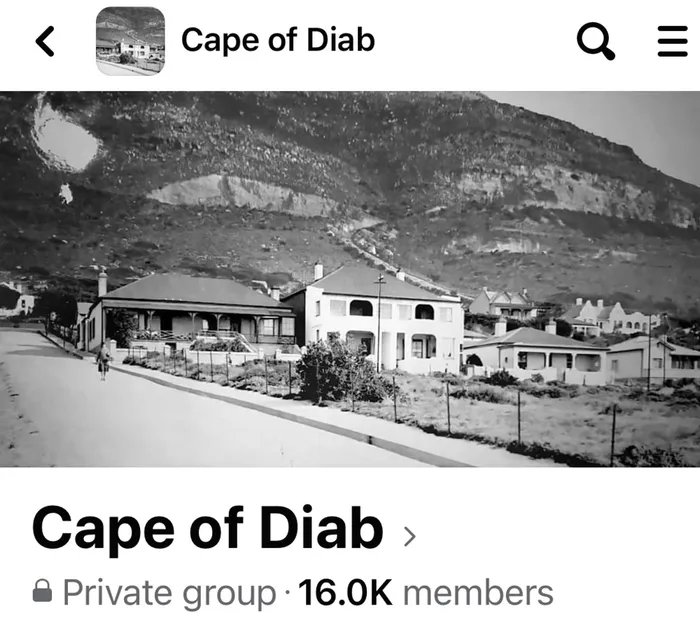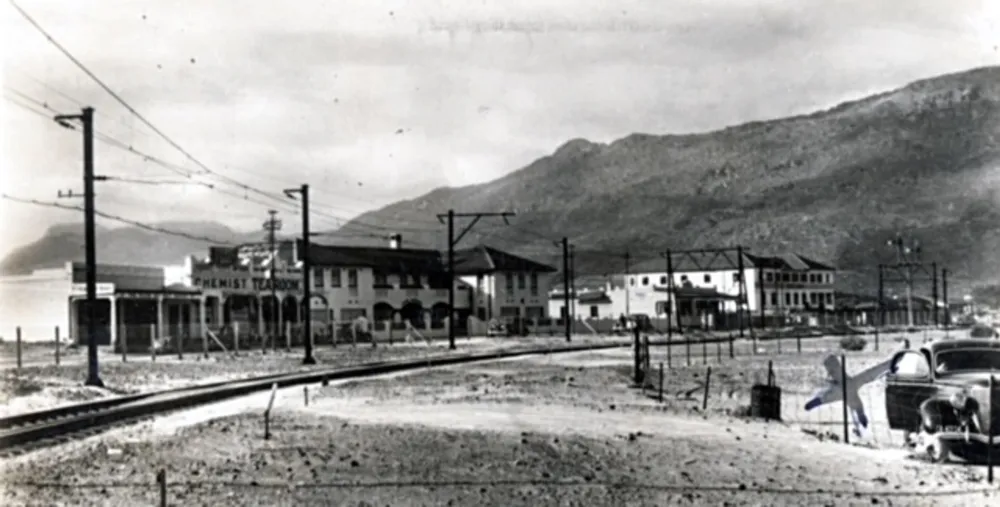Welcome to the Cape of Diab

A screengrap of the Cape of Diab’s homepage on Facebook.
With its 16 000 members, the Cape of Diab Facebook page is no stranger to far south residents.
The page, with its fascinating archive of South African images and facts, was created by Michael Fortune in 2019 to show his archive of mostly, but not exclusively, Western Cape images and memorabilia.
He accumulated them over the years from eBay, Marketplace, fairs and shops in South Africa and the UK.
“It is worth remembering that immigrants to South Africa often sent postcards, photos and other items to family and friends from whence they came. It is these items that form much of our respective collections and amount to around 90% of what we post,” he says.
A year after starting the group, Mark Finnigan, who brought his vast collection of mainly the Eastern Cape, joined him.
Together, they administer the group, and while most of the content comes from their respective collections, Mr Fortune says the members of the group are making an ever-increasing contribution to the archive.
Information from sources such as Fish Hoek Fossickings by Dr John Clifford and books by Joy and Malcolm Cobern, renowned for their knowledge of Fish Hoek and surrounds, among other sources, are also quoted in many posts.
The group counts archaeologists, heritage experts, historians, authors and other experts among its members, says Mr Fortune, who sees himself as an enthusiastic amateur who likes to share his collection with like-minded folk and promote an interest in South African history and heritage.
Mr Fortune, who grew up in Fish Hoek in the 1960s and 1970s, has a clear bias towards the Cape Peninsula and frequently shares interesting facts and images connected to the far south.
He started his education at Mrs Hamilton’s Nursery School on the corner of Seventh Avenue and then attended St Imelda’s Convent School and Kalk Bay Primary School.
Later he transferred to St George’s Grammar School in Mowbray, where he struck up lifelong friendships with brothers Tim and Dave Hart who followed careers in archaeology and heritage respectively.
During the 1980s, Mr Fortune pursued a career in computing, and in the early 1990s, he decided to seek adventure abroad.
“It was not long after I arrived in the UK that I discovered that there was a wealth of postcards, maps and other Africana freely available, and this soon developed from a mere interest into a serious hobby.”
Postcards, he says, became very popular at the start of the 20th century and many of those were sent by visitors or immigrants to South Africa, to friends and family in the UK and other foreign places.
His collection grew over the years, and about 10 years ago, he started sharing some of it on Facebook, which “proved to be very popular”.
“It was soon apparent that there was a real interest in these reflections of the past, fuelled by nostalgia, a passion for history and heritage, or perhaps something else. This ultimately led to the founding of the Cape of Diab group.”
The name “Cape of Diab” was used to describe the southern part of Africa in Italian cartographer Fra Mauro’s world map of 1450 before the Portuguese sailed there, says Mr Fortune.
Fish Hoek and surrounds, he says, have revealed a surprising past, most of which was not obvious in the “sleepy backwater” he knew as a boy.

